Army of the world. Turkmen Armed Forces
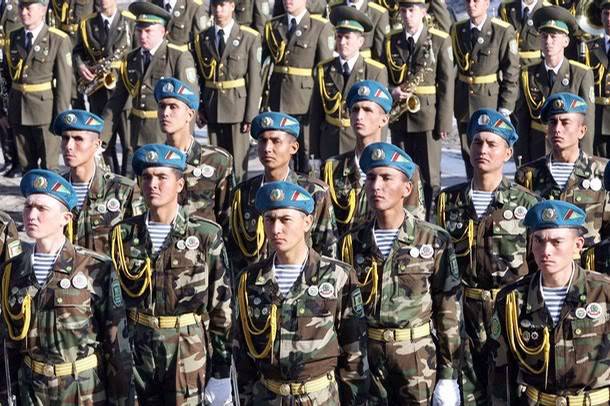
Historical certificate of the armed forces of Turkmenistan
After the collapse of the USSR, a large Soviet military group came under the jurisdiction of Turkmenistan: the 36th Army Corps, 58th (Kizyl-Arvat), 84th (Ashgabat), 88th Kushka MSD, 61- from the Turkestan Military District I am a training MOD (Ashgabat), 156th (Mary-2) and 217th (Kizyl-Arvat) aviation regiments of fighter-bombers of the 49th air army, from the 12th separate air defense army - the 17th air defense division (Ashgabat) with 2 anti-aircraft missile brigades, the 12th radio technical brigade and the 64th radio technical regiment ”152nd (Aktepe) and the 179th Guards (Nebit-Dag) fighter aviation regiments, some parts of the Caspian flotilla, as well as a number of other military units.
In the military-technical aspect, this Soviet legacy was characterized by the following figures: basic and secondary Tanks - 530, infantry fighting vehicles, armored personnel carriers and armored personnel carriers - 1132, field artillery guns, mortars and MLRSs with a caliber of more than 100 mm - 540, combat aircraft - 314, combat and other helicopters - 20, as well as several small warships and boats.
Border units were stationed in the territory of the Turkmen SSR (135 of Nebit-Dag, 67 of Karakalinsky, 71 of Bakharden, 45 of Serakhsky, 46 of Kaakhkinsky, 47 of Kerkinsky and 68 of Kakhkinsky, 1999 of Kaakhkinsky, XNUMX of Kerkinsky and XNUMX of Kakhinsky, XNUMX of Kaakhkinsky, XNUMX of Kerkinsky and XNUMX of Kakhinsky, XNUMX of Kaakhkinsky, XNUMX of Kerkinsky and XNUMX of Kakhinsky, XNUMX of Kaakhkinsky, XNUMX of Kerkinsky and XNUMX of Xakhakhs of Kahakinsk, XNUMX of Kerkhansky, XNUMX of Kerkinsky and XNUMX of Takhakhakh. , sea and river parts of the border troops of the Central Asian border district of the KGB of the USSR. Before XNUMX, border guards in the Turkmen sector (including at sea) were conducted jointly with the border troops of the Russian Federation, but they left the country at the request of its leadership (which, according to independent experts, was primarily due to the desire of the ruling regime control super profitable drug traffic from Afghanistan).
In addition, the Turkmen got the material base and armament of the internal troops and civil defense troops of the former USSR that were in the republic.
Getting the Soviet mountains weapons and embarking on the creation of national armed forces, Turkmenistan quickly faced the problem of a shortage of command personnel, since the majority of “European” officers left the country that had collapsed in the Middle Ages.
Currently, this problem is being solved by training national officers in our own and foreign military schools, but the military professionalism of the majority of Turkmen officers raises serious doubts, especially in specialties related to the operation of sophisticated military equipment. So, until recently, there were only a few pilots of combat aircraft of indigenous nationality in the Turkmen armed forces. It came to the point that in the pompous military parades the gaze of "Turkmenbashi the Great" was caressing the passage of airplanes piloted by pilots from Ukraine. Much of the military equipment sold (including smuggling) to third countries.
Due to the specifics of the backward Turkmen society with its stable tribal traditions, the recruitment of conscripts is carried out on the basis of the principle of extraterritoriality, and the commanding staff (including the highest) undergo frequent rotation and at worst repression. Thus, the country's leadership does not allow the emergence of potentially dangerous tribal local ties between personnel and the population of a particular locality, since they belong to different tribal groups. The remaining tribal and clan contradictions, in principle, determine one of the major flaws in the Turkmen military machine (to some extent, however, they are also characteristic of other countries of post-Soviet Central Asia).
The Turkmen army is engaged not so much in combat training as in forced labor in various industries and agriculture. As Niyazov himself said, up to a third of all draftees go to work in civil organizations.
It is unlikely that this situation fundamentally changed after his death in 2006: despite the known tensions between Turkmenistan and Uzbekistan (including due to the problem of sharing the waters of the Amu Darya) and Azerbaijan (due to the unresolved status of the Caspian Sea). - the most important reservoir of hydrocarbons) and the chronically unstable situation in Afghanistan (the border with which the Turkmen protect extremely dissatisfied, which causes concern for Kazakhstan), Ashgabat is more afraid of the emergence of anti-government us troenies in the army, rather than an external threat.
Organizational structure and human potential of the armed forces of Turkmenistan
The military machine of Turkmenistan includes troops and forces of the Ministry of Defense, the State Border Service, the Ministry of the Interior, the National Security Committee and the Presidential Security Service. In addition, it includes the State Courier Service and the State Service for the Registration of Foreign Citizens. The supreme commander of the armed forces is the president of the country.
The armed forces proper, which are included in the structure of the Ministry of Defense, consist of ground forces, air forces, air defense, naval forces, as well as specialized production and service formations engaged in the civilian sector of the economy (they are managed by special forces of the General Staff). The total number of aircraft as of 2007 g, estimated at 26 thousand people, and taking into account production and service formations - up to 50 thousand
In military and administrative terms, the territory of Turkmenistan is divided into 5 military districts in accordance with the administrative division of the country into the same names of the айlayas - Ahal (center — Ashgabat), Balkan (Balkanabad), Dashoguz (Dashoguz), Lebap (Turkmenabad) and Mary (Mari).
According to the CIA of the United States, the number of military manpower (men aged 15-49 years) in Turkmenistan is about 1,3 million, of which about 1 million are fit for military service. Annually reach military age (18 years) about 56 thousand men. The duration of military conscription is 2 of the year, with the exception of the Navy, where the term of service is set to 2,5 of the year. Persons with higher education serve 1,5 of the year (previously this period was set for all draftees).
The institute of contract military service in Turkmenistan was canceled in 2001, but it was established by law that conscripts, at their request, could be served not with 18, but from 17 years (apparently, there are quite a few “volunteers” in totalitarian Turkmenistan) and deserters, for the return of which to military units during the times of the “Turkmenbashi” an amnesty was declared). The upper level of military age is 30 years (higher only in Azerbaijan).
In accordance with the guidelines of the ruling regime, the course was set for food self-sufficiency of the armed forces, and combat training of personnel was minimized; in the production and service formations, it is unlikely to be held at all.
The training of officers of the Armed Forces is carried out at the Ashgabat Military Institute, and the military departments and faculties that previously existed at civilian higher educational institutions are closed in order to increase the annual recruitment of recruits. In addition, some officers are trained in military schools in Turkey, Ukraine, Russia and Pakistan. The United States also provides some support in this regard.
Frankly nationalistic personnel policy of the ruling regime, aimed at filling senior positions, including in the army, individuals with “purely Turkmen ancestry” in fjtex generations led to the exclusion of “non-title” highly-qualified personnel in favor of those whose merit is not professionalism, but ethnic “titularity” and belonging to one or another loyal clan.
Turkmenistan buys weapons and military equipment in Bulgaria, the Czech Republic, Slovakia, Romania, Belarus and Ukraine (this is due to an increase in the number of tanks in comparison with the Soviet "legacy"). Turkmen attack aircraft Su-25 was repaired at the Tbilisi Aviation Plant in Georgia.
Ground troops
The number of NEs as of 2007 year was estimated in different sources in 21 — 25 thousand people. Currently, the process of reforming them is underway with the transition from the traditional Soviet divisional-regimental structure to the brigade, and the NEs in general have a mixed divisional-brigade structure. For the most part, the formations are cropped; they are fully manned only during mobilization.
Each MSD consists of a tank, 3 motorized rifle, artillery and anti-aircraft artillery regiments, combat support and service units, and a brigade of the respective battalions and divisions.
The composition of the ground forces includes:
—2-I study MSD named after Alp Arslan (former Soviet 61-I study MSD; Tedzhen);
The 3-I MSD named after Bairam-Khan is considered an elite compound and can be contained in a state close to the deployed one (former Soviet 84-I MSD; Ashkhabad);
- 11-I (according to other data 357-I) MSD named after Sultan Sanjar (former Soviet 88-I MSD; Kushka, officially - Serkhetabad);
- 22-I MSD named after Atamurata Niyazov (former Soviet 58-I MSD; Kizyl-Arvat - officially Serdar);
- 4-I Torgrul-beg;
- 5-I SME named Chagry-beg;
- 6-I SME named after Gerogly-beg;
- 152-I airborne assault brigade (Mary);
-? - I missile brigade - possibly disbanded (operational tactical missile system 9K72);
-? -Th artillery brigade (152-mm howitzer 2А65 "Meta-B"; Ashkhabad);
-? -Th rocket artillery regiment (220-mm 16-barreled MLRS 9P140 "Hurricane"; Ashgabat);
- 2 air defense missile brigade of the ground forces
-? Th engineering engineer regiment (Ashgabat);
-? - the first paratroop battalion of special purpose (Ashgabat);
- The central military range (Kelat).
In service with the Army there are (as of 2007):
main tanks T-72 - 702 (according to other data 808);
BMP-1 and BMP-2 - 855-930 (approximately equally);
BRM-1K - 12;
BTR-60, BTR-70 and BTR-80 - 829;
BRDM-2 —170;
Launches of an operational-tactical missile system 9K72 - 27 (according to some data, 12 launchers in 2002 — 03 were returned to Russia);
152-mm self-propelled howitzers 2G3 "Acacia" - 16;
122-mm self-propelled howitzers 2C1 "Carnation" - 40;
120-mm combined self-propelled guns (howitzers-mortars) 2С9 "Nona-S" - 17;
152-mm howitzer D-1 - 76;
152-mm howitzer 2A65 "Msta-B" - 72;
152 mm howitzer guns D-20 - 20 — 72;
122-mm howitzer D-ZO —180;
220-mm 16-barrel MLRS 9P140 "Hurricane" - 54;
122-mm 40-barrel MLRS BM-21 "Grad" - 56;
122-mm 36-barrel MLRS 9P138 "Grad-1" - 9;
120-mm mortars PM-38, M-120 and (or) 2B11 (complex 2C12 "Sleigh") - 66;
82-mm mortars BM-37 and (or) 2B14-1 "Tray" - 31;
100-mm anti-tank guns T-12 and (or) MT-12 "Rapier" - 72;
PU anti-tank missile systems of various types - at least 100;
73-mm LNG-9 “Spear” anti-tank grenade launchers -?
40-mm hand-held anti-tank grenade launchers RPG-7 - 400;
23-mm quadruple ZSU-23-4 "Shilka" - 48;
57-mm anti-aircraft guns C-60 - 22;
PU self-propelled short-range air defense systems "Wasp" - 40;
Self-propelled self-propelled short-range air defense systems "Strela-10" - 13;
MANPADS "Strela-2" - 300.
Much of the weapons and military equipment is not combat ready
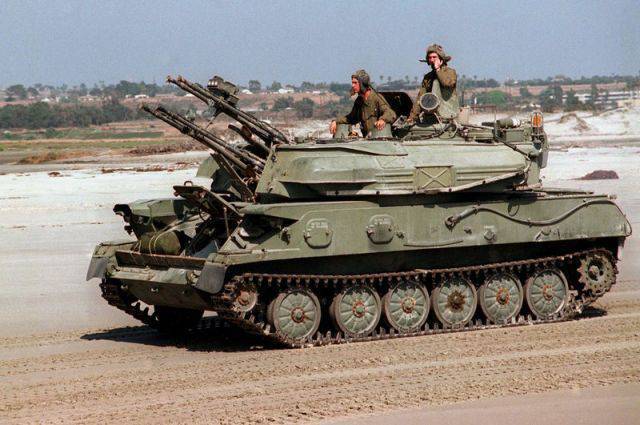
Air Force and Air Defense Forces
The strength of the Air Force and Air Defense Forces as of 2007 was estimated at 4,3 thousand. According to the contradictory information of 2007 — 08, they include:
- 99-I air base (67-th mixed air regiment; Mary-2): MiG-29 fighters, Su-17МЗ fighter-bombers, perhaps, Su-25 attack aircraft;
- The 55 th Fighter Wing (Nebit-Dag, officially - Balakanabad) - may have been disbanded: MiG-23М fighters - skygotovye;
- 107 Fighter Regiment (Aktepe, near Ashgabat): MiG-23М interceptor fighters, MiG-25PD interceptor fighters, Su-25 attack aircraft - the last two types, most likely, are not light-ready;
- 47-I separate mixed aviation squadron (Aktepe): An-24 and An-26 light military transport aircraft, Mi-24 combat helicopters, Mi-8 medium combat helicopters;
- 31-I separate mixed aviation squadron (Chardzhou - officially Turkmenabat) - the existence of a question: MiG-21, fighter-bombers Su-7B, fighter-interceptor Yak-, 28P, JI-39 «Albatross" trainer aircraft, An-12 medium-sized military transport aircraft — most likely, all finished;
—56-I storage base of aviation equipment (Kyzyl-Arvat): MiG-23 fighters and Su-17 fighter-bomber;
- training center: Su-7B fighter-bombers and Albatross L-39 training aircraft,
- The 1-I Turkmenbashy anti-aircraft missile brigade (headquarters and a separate radio engineering battalion - Bikrava near Ashgabat, anti-aircraft missile regiments in the Murghab / 13 spf, Kurtli and Turkmenbashi areas - former Krasnodovsk): ZRK large (C-200 ), medium (C-75) and short (C-125) range;
> -? -Th anti-aircraft missile brigade - presumably (possibly armed with an army self-propelled medium-range air defense system "Circle");
—2-I radio team (2960 man, 129 RSL of various types scattered throughout the country).
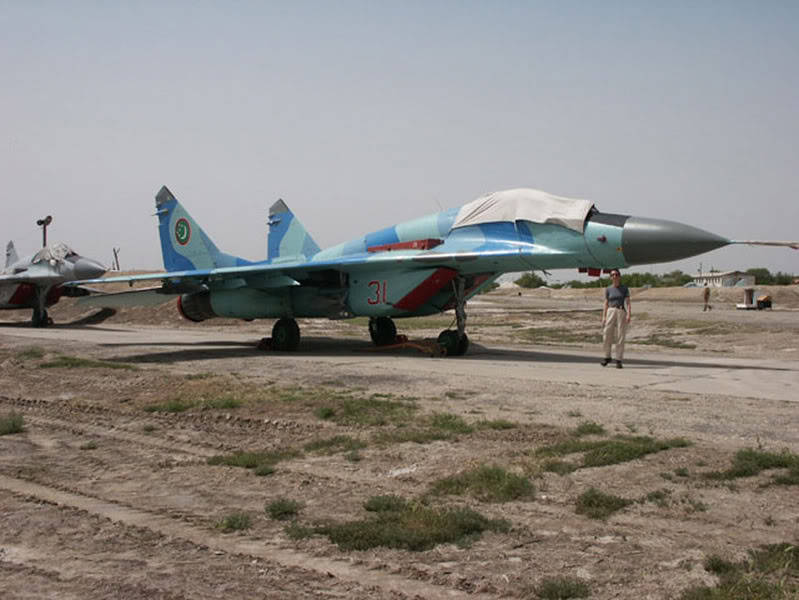
The fleet of Air Force and Air Defense Forces includes cars
MiG-29 - 22 fighters;
combat trainer MiG-29UB - 2;
MiG-23М - 230 interceptor fighters (including MiG-23UB combat training aircraft);
MiG-21 - 3 fighters;
MiG-25PD fighter-interceptors - 24;
• * Yak-28П interceptor fighters ^?;
Su-17М fighter-bombers - ^ 65 (including Su-17UM combat training aircraft);
Su-7B fighter-bombers - 3;
Su-25 - 46 attack aircraft (including combat training Su-25UB); '
JI-39 "Albatross" training aircraft - 2;
An-12 medium military transport aircraft -? N
An-24 - 1 light military transport aircraft;
An-26 - 10 light military transport aircraft;
An-2 - 10 light military transport aircraft; “V • combat helicopters Mi-24-g-10;
Mi-8 - 20 medium transport-combat and amphibious transport helicopters.
Experts estimate that, at best, 24 MiG-29 / 29UB are nominally (they are repaired in Ukraine at the Lviv aircraft repair plant), up to 50 MiG-23М, 65 Su-17М / UM, 3 Su-7Б, some Su-25, 2 L-39, 1 An-26, 10 Mi-24 and 8 MiG-8. The remaining machines are in storage, with no prospects for use. The number of pilots capable of fully performing combat missions is estimated at 10 — 15 people.
With technical assistance from Ukraine, an extension of the air-to-air guided missile resource for fighter aircraft is carried out.
The number of launchers of long-range (С-200), medium (С-75) and small (С-125) launchers is estimated at approximately 100 units, of which the order of 30 is considered to be real combatant. In the armed forces of the air defense radio engineering troops, three Kolchuga passive electronic intelligence complexes, supplied by Ukraine, have recently arrived.
Air Force reserve - civil aviation of Turkmenistan. The national airline "Turkmenistan Airlines» (Turkmenistan Airlines), filed 2006, at 30 aircraft were: 4 passenger An-24RV, 7 - Boeing-717-200, 3 - Boeing-737-300, 4 - Boeing-757-200 , 1 - Boeing-767-300EY, 7 - Yak-40 and 4 cargo aircraft IL-76ТD, which can be used for transportation and landing landing of military equipment.
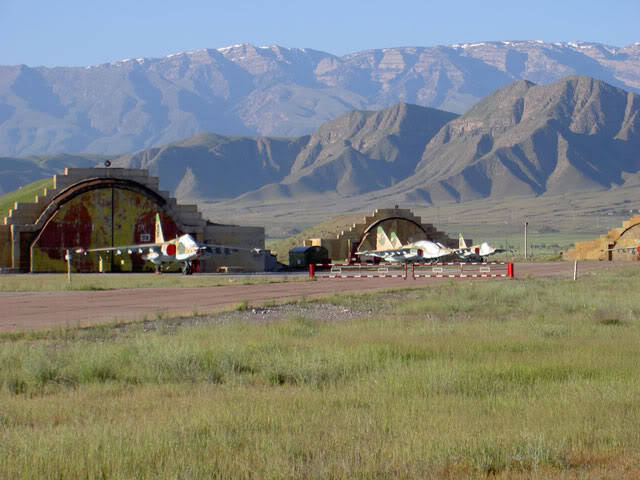
Naval forces
Although modern Turkmen historiography has already reached the point that “Turkmen seafarers, among whom were famous sailors, reached the shores of Venice and other European countries,” it is possible to put this extremely bold statement in line with the fact that Othello was not just a moor, but a Turkmen moor (until recently Ashkhabad “historians” also came up with the idea).
In fact, the maritime component of the Turkmen national history is reduced mainly to their occupation of primitive fisheries in the Caspian Sea, for which representatives of this people used the taimoons carved from wood. At the end of 1930's A group of Turkmen fishermen, in order to prove the nautical qualities of the Taimuns and their great love for Comrade Stalin, made a great voyage, first along the stormy Caspian Sea, then along the Volga and the canal. Moscow to the Kremlin itself. So they still have some maritime traditions.
In the post-war period, the following multi-departmental naval structures of the USSR were deployed in Turkmenistan:
- 228th brigade of ships protecting the water area of the Caspian flotilla (patrol boat of project 205M, patrol boat of project 14081, base minesweeper of project 1252 and two hovercraft - probably landing assault aircraft of project 1205; base station - port of Krasnovodsk);
46-th separate division of border guard ships and boats of the Central Asian border district of the KGB of the USSR (4 — 5 patrol boats Ave. 1400; basing point - Krasnovodsk port);
- a detachment of river frontier boats of the Central Asian frontier district of the KGB of the USSR on the Amu Darya River (border with Afghanistan is the home station — Kelif village) - perhaps a similar detachment was on the Atrek river (border with Iran);
a separate training coastal missile division of the Caspian flotilla (Jafar village). Almost all the ships that were in the 228 Brigade and the border guards were transferred to Turkmenistan, and for some time (until 1999), two border boats guarding the maritime border with Iran were mixed Russian-Turkmen crews. Russian officers of the former Soviet Navy also served on the ships of the Turkmen Navy (their first commander was the captain of the 1 rank Valerian Repin).
Currently, the Turkmen Navy (the only naval base - the port of Turkmenbashi, formerly Krasnovodsk) is under the operational control of the command of the country's border troops. Estimates of the number of their personnel vary greatly from one source to another: some have 125 people, others have 700 (as of 2007), some have yes 2000, and even 3000 (which is highly doubtful).
The naval structure of the Navy is represented by patrol boats 16: “Grif” type 10 (1400 and 1400М, ex. Soviet and Ukrainian supplies); one is of the Point type (PB129 “Merdzhen” - former “Point Jackson”, transferred from the US Coast Guard); one is of the Saiga type (14081 Ave., former Soviet), four are of the Kalkan-M type (Ukrainian supply; perhaps there are already more of them). There is a former Soviet base minesweeper of the "Corundum" type (1252 av.).
Presumably, they are all consolidated into a brigade of ships guarding the water area. The number of Grif-type boats is planned to be brought to 20 units through the purchase of their improved version of the Grif-T (Condor), and of the Kalkan-M type to 10 (Ukraine builds and delivers others). There is information about the transfer by Iran of some patrol boats for rent, but the details of this are not known. Absolutely absurd information sometimes appearing in the press about the lease of the Iranian destroyer by the Turkmen should be attributed to the blatant incompetence of the “writers” who spread it.
Judging by the parades conducted during the life of the dictator Niyazov, the Navy also has marines - according to one data, a battalion, according to others - a brigade (in fact, coast defense forces not adapted to amphibious operations due to the lack of airborne assault forces).
On the island of Ogurchinsky (in Turkmen Ogurdzhaly) in the Turkmen gulf there is a coastal observation and communication post of the Navy.
The military efficiency of the Turkmen military "fleet", as well as the armed forces of this country in the COL, is more than doubtful.
In the Turkmen merchant fleet on 2003, according to the US CIA, in addition to the few small items, there were only 2 large vessels — a tanker and oil sludge carrier with a total displacement of 6873 brt.
Production and service units
The number of personnel of the production and service formations of the Armed Forces of Turkmenistan is estimated to be at least 20 thousand. Ony work in various industries and agriculture of the country and, in addition, are involved in performing the functions of employees of the state automobile inspection, firefighters, security guards of banks, post offices, telegraph offices, hospital attendants in hospitals, etc.
Other military (paramilitary) formations and special services
The Ministry of the Interior - the number of personnel is estimated at 27 thousand people (including internal troops).
\ h The National Security Committee (KNB) (estimated number of 2,5 — 4 thousand people) is the country's main special service. The KNB mainly performs the tasks of the political secret police (carrying out, in particular, cruel repressions in the style of the NKVD against the opposition), and also deals with the operational cover of the criminal business of the ruling elite (the supply of weapons, drugs, etc.). In particular, with the direct involvement of the KNB, weapons and ammunition were supplied to the Afghan Taliban and direct contacts were established with their leadership. Weapons, incl. exported from Ukraine, Romania, Moldova, with the mediation of the National Security Committee and attracting private firms as roofs, was also delivered to South Yemen.
The real contribution of the KNB to the fight against drug trafficking declared by it is eloquently shown, for example, by the fact that the military tribunal of the Turkmen frontier major Vitaly Usachev, who tried to prevent the drug traffic through the Ashgabat airport, was executed by the verdict. The poor major made two of the most serious mistakes in his life: first, he remained to serve “independent Turkmenistan”, and second, he tried to serve this state honestly ...
It should be noted that the KNB itself was subjected to repeated repression both during the life of the Turkmenbashi and after his death - the rulers of Turkmenistan in their own special service see a danger to themselves (apparently, not without reason).
The State Border Service numbers about 12 thousand personnel. The border troops include 8 border detachments, including Bekdash, Kushkinsky, Kerkinsky, and Koytendag. The protection of the maritime border under the operational guidance of the State Border Service is carried out by the country's Navy (see above). In addition, on the Amu Darya River (Kelif base), six small border boats of the Aist type (1398 Ave, former Soviet) are used.
According to various estimates, the Presidential Security Service of Turkmenistan numbers from 1 to 2 thousand people.
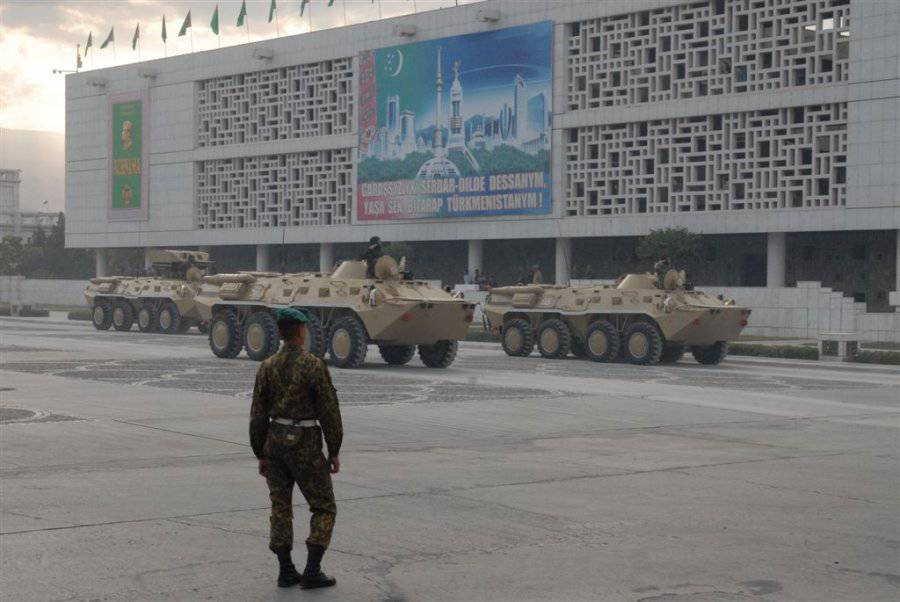
Information